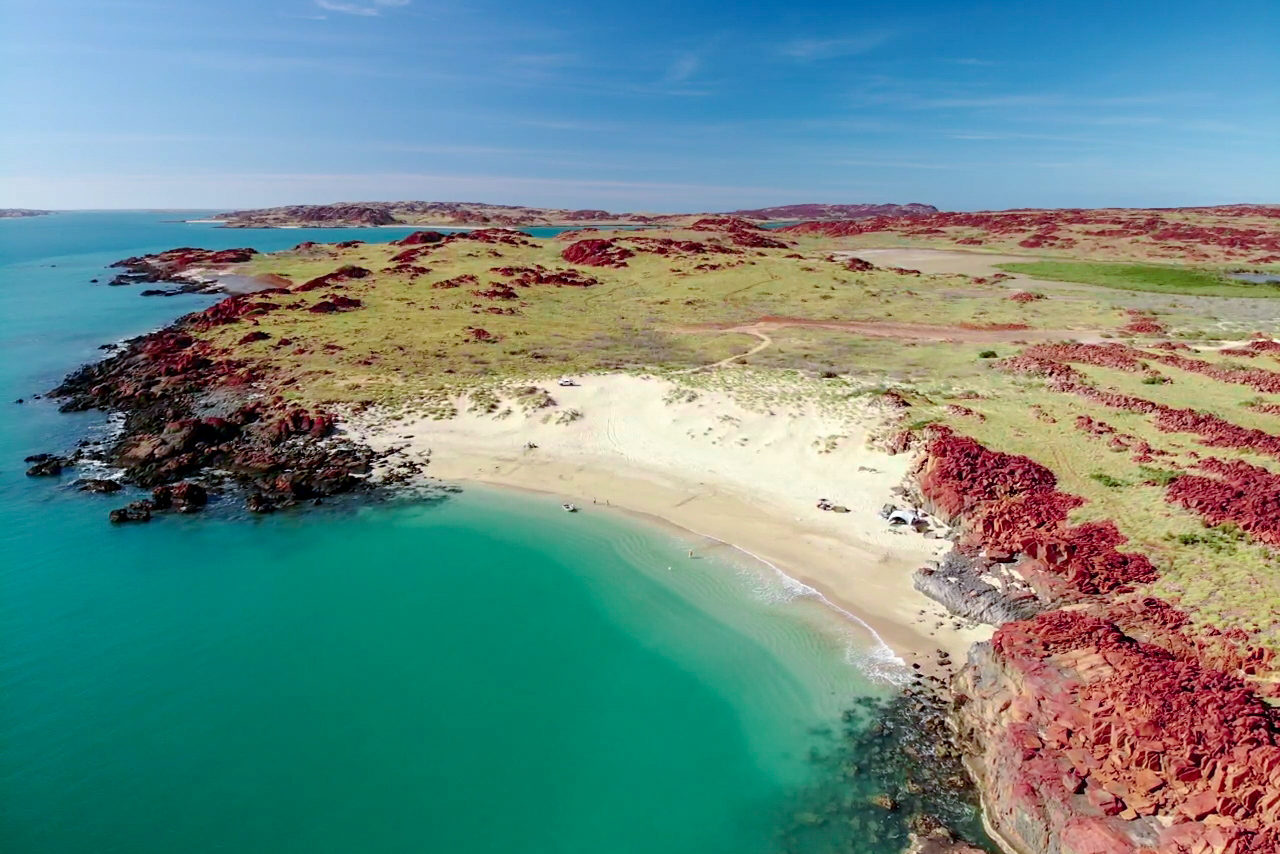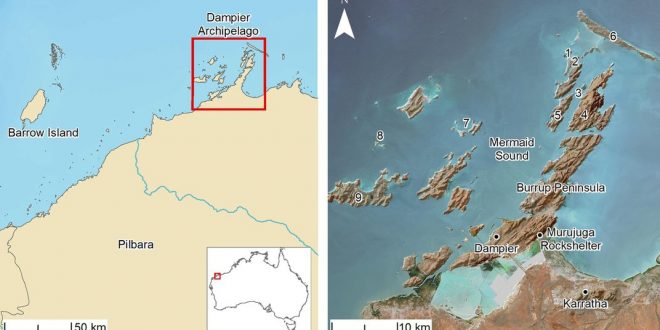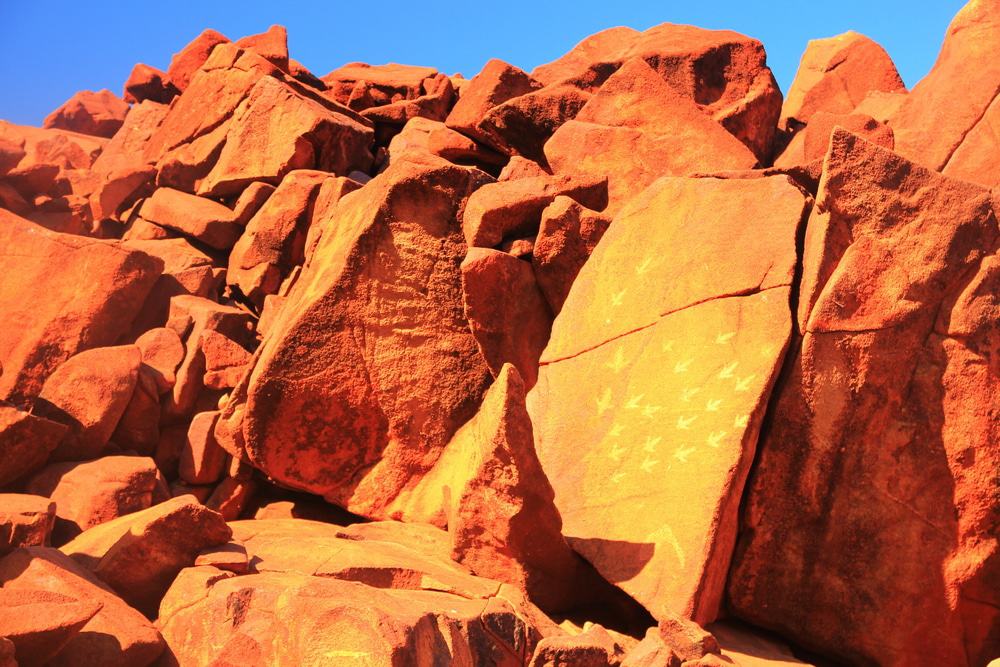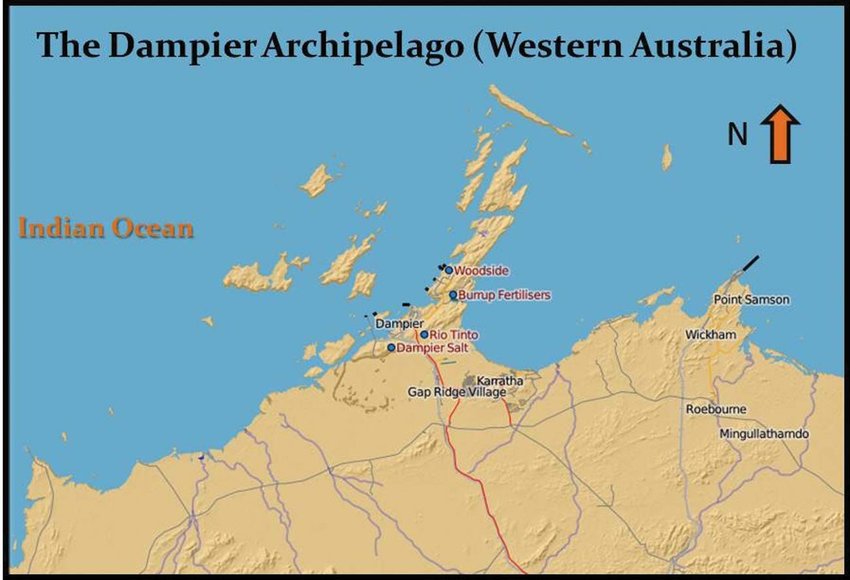
AsianOverland.net
Tour Guide - Itinerary
Asian Overland Sydney to London
Started 22/06/2022 Finished 21/06/2023365 Days ITINERARY
Day 18 date 09/07/2022UPPER SWAN VALLEY to BURRUP PENINSULA, PILBARA
ASIANOVERLAND.NET SYDNEY TO LONDON DAY 18: UPPER SWAN VALLEY TO BURRUP PENINSULA, PILBARA
The Aboriginal population of the Pilbara considerably predates, by over 45,000 years, European colonisation. People were living in the Pilbara even during the harsh climatic conditions of the last two ice ages. The early history of the first peoples is held within oral tradition, archeological evidence and petroglyphs, rock art etched into hard rock.
Near the town of Dampier, named after the English navigator William Dampier, is an island known as Murujuga, which contains a large collection of world heritage listed petroglyphs dating back tens of thousands of years. Rock art in the Pilbara has been primarily etched into hard rock surfaces, compared to paintings on the softer sandstone further north in the Kimberley and Kakadu.
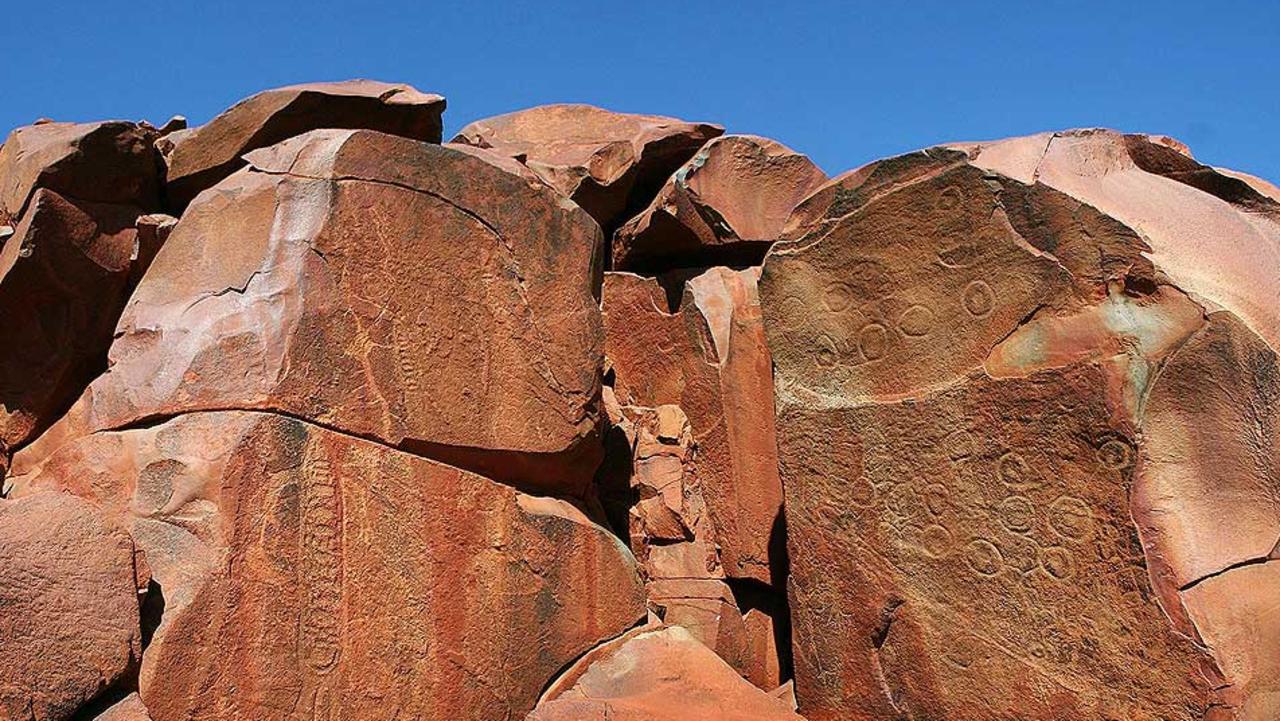
Murujuga, known as the Burrup Peninsula, is in the Dampier Archipelago, in the Pilbara region of Western Australia. In 1963 the Murujuga island became an artificial peninsula when it was connected to the mainland by a causeway for a road and railway.
In Ngayarda languages, including that of the Aboriginal people of the Burrup Peninsula, the Jaburara people, murujuga meant "hip bone sticking out".
The Burrup Peninsula is a unique ecological and archaeological area containing the Murujuga cultural landscape and the world's largest and most important collection of petroglyphs. Some of the Aboriginal rock carvings have been dated to more than 45,000 years old. The collection of standing stones here is the largest in Australia, with over one million rock art petroglyphs, many depicting images of the now extinct thylacine (Tasmanian tiger) and other extinct megafauna.
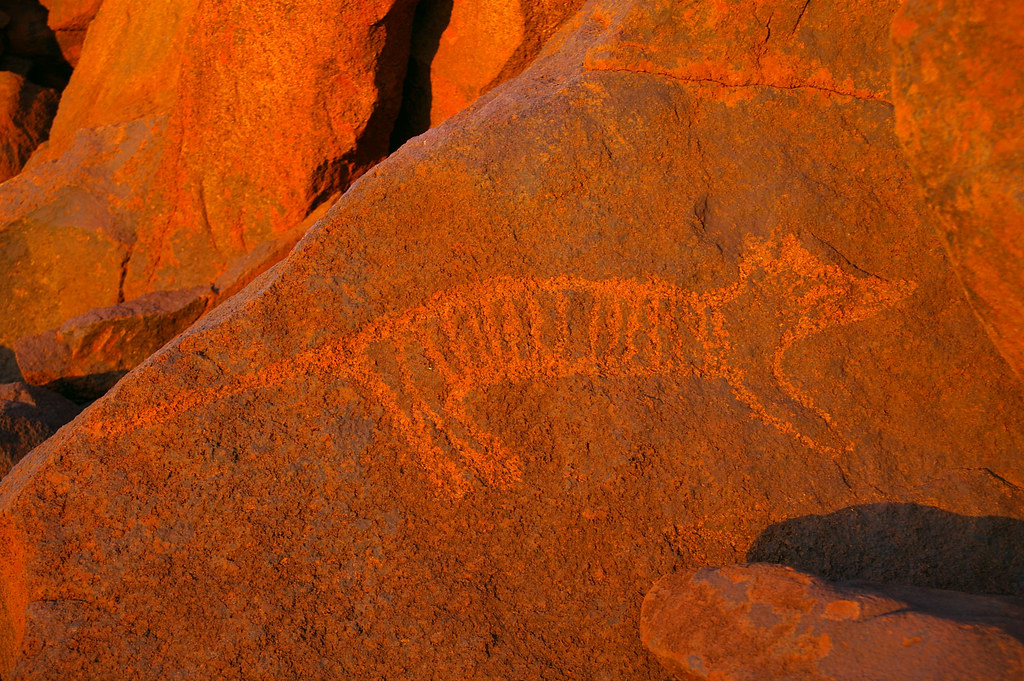
The Murujuga National Park lies within Burrup, and contains the world's largest collection of ancient rock art, as well the Ngajarli Trail, completed in August 2020. Traditional owners also created a 700-metre universal boardwalk, along with interpretative signs. The Murujuga Aboriginal Corporation facilities allow visitors to appreciate the cultural and historical significance of the site.
On 1 July 2020, scientists recorded ancient Aboriginal underwater archaeological sites at two sites off the Burrup Peninsula. The 269 artefacts found at Cape Bruguieres, as well as an 8,500-year-old underwater freshwater spring at Flying Foam Passage off Dampier, are described in the study.
The tens of thousands of years old artefacts include hundreds of stone tools and grinding stones, evidence of life on lower ground before sea levels rose between 7,000 and 18,000 years ago (after the last ice age). The ancient grinding stones evidence some of the first dampers or bread of Western Australia, ground grass seeds mixed with water and cooked in hearths.
Grinding stones were never, or rarely, carried by the First Australians. They were left where they were used seasonally, and everyone knew who owned them. The First Australians travelled light, and usually left their tools and implements where they were used, whether for food preparation, cooking, hunting or fishing.
© This work is copyright. Apart from any use permitted under the Copyright Act 1968, no part may be reproduced by any process, nor may any other exclusive right be exercised, without the permission of Peter Searle, peter@portseavillageresort.com; 1980-2024.
Website built by Justin O’Dea www.webdeveloperdocklands.com.au
